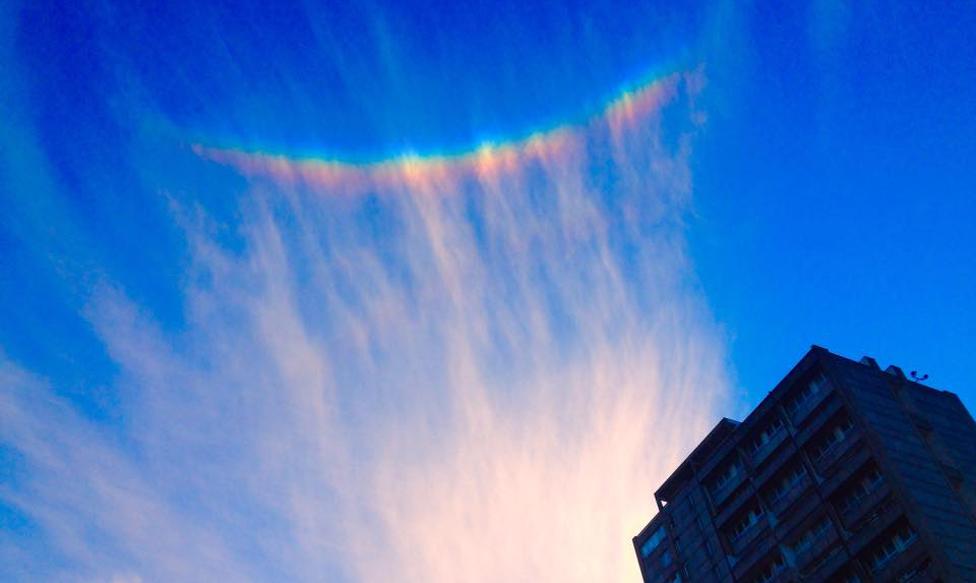Who, What, Why: How common are upside-down rainbows?
- Published

This was spotted by children at Glamis Adventure Playground in Shadwell, London
An "upside-down rainbow" was spotted in the UK over the weekend. But what causes these and how common are they, asks Chris Stokel-Walker.
A minor meteorological event occurred over the skies of England this weekend. From Leeds in the north to Kent in the south, an "upside-down rainbow" was spotted. On social media people shared photographs of the spectrum of colours reaching up into the sky, rather than down to the ground.
The first thing to clarify is that upside-down rainbows are not, in fact, rainbows. "They look like rainbows, and in some sense they are similar, but the crucial difference is that rainbows are produced by the bending of light and separation of the colours through raindrops falling out of clouds," explains Dr David Schultz, chair of synoptic meteorology at the University of Manchester.
In fact, the correct term for this meteorological phenomenon is a circumzenithal - or Bravais - arc. Unlike rainbows, where sunlight refracts through raindrops, circumzenithal arcs occur when sunlight refracts through ice crystals, held in cirrus clouds, in a specific way.
"These arcs are produced by light being bent through ice crystals in the cloud and separating the colours," Schultz adds. The principles are similar, though, says Dr Hiro Yamazaki of Newcastle University's school of geography: "It's the same mechanism as a normal rainbow."
What differs is the shape of the particles through which the sunlight refracts. "In the case of the circumzenithal arc, they are hexagonal ice plates composing the cloud. In the case of the rainbow, it's a raindrop," says Schultz.
Circumzenithal arcs are relatively common, though a special set of circumstances are required. The sun needs to be more than five, and less than 32 degrees above the horizon, in order that the sunlight can refract in the correct way through the ice crystals to form the smiling, rather than frowning, halo.
The air also needs to be relatively still, in order that the ice particles can be oriented the same way. That generally requires a lack of turbulence, and not a lot of updraft or downdraft. It also helps if no clouds are in the way to block the view - a rare luxury in Britain.
Subscribe to the to get articles sent to your inbox.